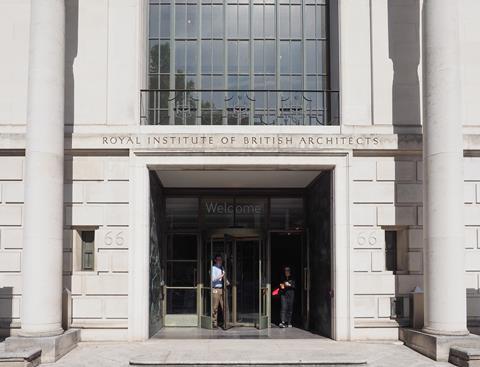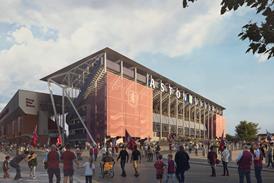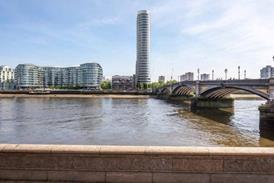New research essays commissioned by RIBA take the long view on the impact of economic forces on architecture, writes Adrian Malleson

The economics of the day-to-day are vital concerns for practices, whether it is market trends, project funding, client budgets or practice management.
But when looking to the future of the architects’ profession, there are broader issues to consider. Who gets to commission buildings, and for what purpose? Is the built form of cities as much an expression of economic forces as it is an expression of design and client choice? What role does inequality play in shaping the cities we live in? What will future cities look like?
The Economics of the Built Environment, a new series of forward-looking pieces, commissioned by RIBA, and written by world-leading experts, invites us to explore these questions.
It is part of the RIBA Horizons 2034 programme which looks to the four mega-trends shaping the future of our future world, the built environment, and the practice of architecture. These are the climate challenge, economic forces, population change, and technological innovation.
The horizon-scanning programme identifies five key economic forces that will shape the built environment over the next decade:
1. The financialisation of the built environment
Buildings and finance are inseparable. Buildings are needed to make money, and money to make buildings. Apart from a few older industries, buildings are where the economy happens. The built environment is the very embodiment of economic growth, prosperity, and, sometimes, decline.
But there is more going on, and that ‘more’ is shaping our cities and communities, now and in the future. The built environment is becoming a financial instrument, just like shares or bonds, while finance is constricting the space for just and sustainable architecture to thrive.
Buildings are where the economy happens
Buildings and their tradable parts are now an integral part of a vast and interconnected financial network. Building design is becoming less a resolution of form, function, and place. Driven by the imperatives of finance, it is becoming more a means to maximise the ease with which built assets can be traded. Increased simplification of design (mitigated by superficial complexity) is a result, as is less space for human interaction.
At the same time, financialisation leads to increased instability (as we saw in 2009) and larger peak-to-trough swings.
Being aware of buildings’ role in financialisation can help design and construction professionals respond in practice.
Economic prosperity has gone hand in hand with the rise of the city, with physical closeness and connectivity. Cities bring the benefits of scale and density. In cities, it’s easier for people to exchange ideas, buy and sell things from one another and develop specialisms. But there is a cost to physical connectivity. As cities grow, the cost-of-living increases, and commuting becomes a pain. Too often, transport is paid for in carbon and poor air quality, as well as money.
Does the rise of working from home threaten the future of cities? The early pandemic fear that cities would empty as we raced for space proved short-lived. But changes are afoot. For knowledge-intensive sectors, the need for in-person interaction remains, but fewer days in the office results in a need for higher-quality but smaller central offices, as people go to work less often.
With fewer commutes per week, people may be willing to travel further, with significant implications for transport, population density, planning, investment, and sustainable land use.

Emerging economies are growing, with the fastest increases in Africa and Asia, where people are moving in vast numbers to cities.
Economic growth offers prosperity, higher levels of education and literacy, better health, and greater life expectancy. Over time, emerging economies may move from extraction, manufacturing, and cheap labour to become knowledge-based economies, as some South Asian countries have.
The opportunity for built environment professions is huge. The size of the new markets will be vast. By 2050, the UN project that India will have added 416 million urban dwellers, China 255 million and Nigeria 189 million.
However, rapid economic growth and urbanisation have, so far, typically gone hand-in-hand with increased carbon emissions, poor air quality, inequality, sub-standard housing, and informal settlements.
The even bigger opportunity is to help shape the long-term sustainability of future and rapidly growing cities (whose historical mistakes aren’t baked-in) through co-design, skills transfer, professional development, and knowledge exchange. This is not straightforward and needs to be responsive to local contexts, and based on equal partnerships between emerging and knowledge-based economies.
4. Inequality and spatial justice
Globally, wealth is increasing. Millions of lives have been changed for the better through economic development. But the world remains unequal; the poorest half have just 2% of the world’s wealth, while the richest 10% have 76%.
Trying to reduce inequality isn’t only about trying to create a more just society. Greater equality can improve economic performance, with the release of human potential, the creation of a more skilled workforce, and wider economic participation.
The access a person has to work, retail, transport, education, health, and public space is determined by where they live. People are spatially unequal as well as financially unequal. Wealth can be used to create spatial exclusion, to further spatial inequality or to alleviate it.
Built environment professionals are uniquely well-placed to be clear about and mitigate the social and environmental effects of design decisions, helping to bring greater spatial justice.
5. The economics of sustainability
Without sustainable built environments we cannot have a sustainable future. The economic cost of inaction far exceeds the cost of transforming to a sustainable economy. Recent estimates suggest a 1°C increase in global temperature leads to a 12% decline in world GDP. And already we see the cost of floods, droughts, heat waves, failed harvests, and population displacement; these costs are going to rise.
The creation of a sustainable, design-led built environment, not least in new and emerging economies, has the potential to help decarbonise the global economy, foster social justice, help create resilient, thriving communities and promote prosperity for all.
Investment funds can work with built environment professionals and clients to prioritise green buildings. Together, they can secure investments in environmentally friendly projects, aid the transition to a low-carbon and sustainable economy, deliver social benefits and generate financial returns for investors. At the same time, the risk of investing in assets that become stranded by climate change itself, or the regulatory response to it, is minimised.
These five forces touch the surface. Find out more in The Economics of the Built Environment and explore the interconnected megatrends in the RIBA Horizons 2034 programme (exclusive to RIBA members).
Postscript
Adrian Malleson is Head of Economic Research and Analysis at the Royal Institute of British Architects (RIBA). With thanks to Astrid Haas, Theme Editor for RIBA Horizons 2034: The Economics of the Built Environment, and horizon scan authors Anthony J. Venables, Giulio Verdini, Taibat Lawanson, and Matthew Soules, from whose work these five key economic forces have been taken
















No comments yet